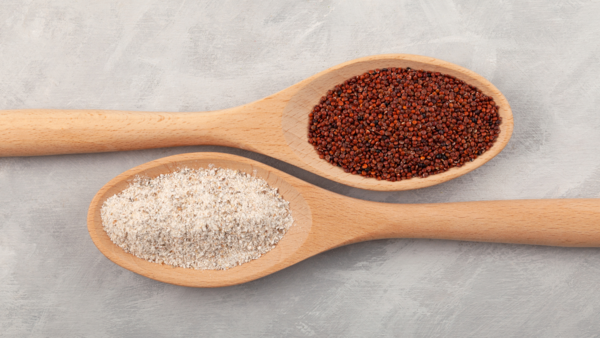Whole grain is a major component of our Indian diets when it comes to staple foods. Ragi and wheat are two grains that are frequently consumed by most people. Although wheat has long been a mainstay of the diet, ragi is becoming more and more well-liked as a healthier substitute. But should you actually make the change to ragi flour, leaving the wheat flour behind?
Health benefits of consuming ragi
Ragi, sometimes called finger millet (Eleusine coracana), is a very nutrient-dense grain that is consumed in many countries of South Asia and Africa, especially India. Rich in fiber, vitamins, and vital amino acids, finger millet is a better substitute for white rice. It can be processed into pasta, noodles, vermicelli, and desserts, among other meals. According to a study that was published in the Advances in Food and Nutrition Research, finger millet may help reduce blood sugar and cholesterol as well as promote wound healing.
Health benefits of consuming wheat
In many parts of the world, wheat is a staple grain that has been cultivated for thousands of years. Bread, spaghetti, cakes, and pastries can all be made with it. Wheat is high in fiber, protein, and carbs. Iron, zinc, and B vitamins are among the vitamins and minerals it contains. A mainstay of Indian cooking, wheat has many nutritional advantages, including heart-healthy nutrients and a high fiber content.
Drawbacks of wheat flour
Celiac illness and gluten sensitivity sufferers may experience digestive problems due to wheat’s gluten content.
The high carbohydrate content of wheat products, particularly refined wheat, can cause weight gain if consumed in excess. Some people may have a wheat allergy, which manifests as gastrointestinal problems, rashes, or itching.
Drawbacks of ragi flour
Goitrogens found in ragi have the potential to disrupt thyroid function if taken in excess.
Ragi flour contains a lot of calcium; eating too much of it can cause problems for people who have kidney stones.
Because of its high fiber content, some people may feel gas or bloating when taking significant amounts of ragi.
The takeaway
Although wheat flour is unquestionably an indispensable component in many diets, adding ragi flour to your meals can have a number of health advantages. Mixing both the flour together is one way to get the benefits of both the grains in your rotis. To improve gut health and lower the risk of numerous food-related disorders, you should incorporate both into your diet rather than comparing them.
Pakistan’s food crisis: Clashes erupt over distribution of free government wheat flour during Ramzan
I’m Manas Ranjan Sahoo: Founder of “Webtirety Software”. I’m a Full-time Software Professional and an aspiring entrepreneur, dedicated to growing this platform as large as possible. I love to Write Blogs on Software, Mobile applications, Web Technology, eCommerce, SEO, and about My experience with Life.





